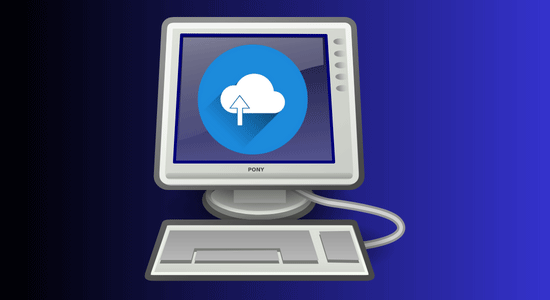Virtual desktop infrastructure (VDI) and remote desktop are two ways an organization can ensure a secure remote working environment. Despite sharing the same aim of providing security, they have major differences.
Their differences range from the cost of setting them up to the level of cybersecurity the organization will get from using them. So in this article, you will learn the meaning of the VDI and remote desktop and the differences between the two solutions.

What is Virtual Desktop Infrastructure (VDI)?
Understanding what is virtual desktop infrastructure will be critical in knowing the difference between it and remote desktop services. A VDI is a virtualization technology where users can use the virtual version of a desktop operating system (OS) via another secure cloud server.
In other words, using VDI is the process where you, as the user, will use a virtual machine containing a desktop operating system. The system won't be physically present with you, nor will it be available in your system. Instead, the desktop operating system (OS) will be hosted in another virtual environment while you access it from your own endpoint.
Characteristics of a Virtual Desktop Infrastructure
Sandboxing Elements
One of the important features VDI has is that it provides enhanced security using the sandboxing feature or elements. Due to these sandboxing characteristics, VDI often prevents sensitive information from being stored on the client's end.
Enhanced Compliance
In a working setting where employees must work securely to prevent cyber security risks, VDI ensures they comply with all security practices.
Improved IT Management
Improved IT management is one of the features of VDI, as it eliminates the need for the IT department of an organization to configure systems manually.
Cost Saving
One thing that takes a large chunk of an organization's budget is the money spent on getting the latest and updated hardware. Instead of spending such money on cutting-edge hardware, it can be channeled into getting a less costly VDI solution.
What is a Remote Desktop?

Remote Desktop is a Microsoft Windows Server feature that allows remotely working employees to access different types of software without posing any risk. Note that most software this type of service allows a worker to access is Windows software and services.
Also, the remote desktop service is not limited to any operating system and is compatible between Windows pc and MacOS.
Characteristics of Remote Desktop
Reduced Licensing
With remote desktop services, an organization won't spend so much on buying and validating licenses.
Reduces Time Wasting
Remote desktop reduces the time it takes to install new software, updating, and upgrading related applications.
Secured Data
Another important feature of a remote desktop is that your data won't be lost or tampered with when you lose your device since it is saved in the cloud.
Differences Between VDI and Remote Desktop
Below are potential differences you will discover when using remote desktops and virtual desktop infrastructures:
Cost of Operation
The cost of operating VDI and remote desktop is a major difference between the two, as they both have varying degrees of cost when setting up and operating. When installing virtual desktop infrastructures (VDIs), multiple virtual machines (VM) must be deployed, and setting them up can cost a lot of money. In addition, an organization's IT team will need to constantly update and upgrade the software used in setting up the VDI.
On the other hand, a remote desktop is very cost-effective compared to a VDI, as it needs only a single operating system for many users. For instance, when you use Venn as your remote desktop solution, it only requires a single operating system for multiple people to use it.
Performance
Virtual desktop infrastructures win when it comes to performance, as they offer more performance quality than remote desktops. Users get access to dedicated storage space when using a virtual desktop infrastructure, allowing them to use graphics-intensive apps without lags.
On the other hand, remote desktops were explicitly built for light or medium workloads in an organization, as they cannot handle heavy workloads. Since remote desktop solutions share a single deployment system, an employee might have a bad experience using it for graphics-intensive software.
Maintenance
Maintenance is another difference between virtual desktop infrastructures and remote desktops. Each has varying degrees of time, effort, and money needed to run regular maintenance on them. Here, remote desktops take the win against VDI as it requires less maintenance time due to its single deployment process. But for VDI, it requires much time and effort to maintain as the organization needs to take care of hardware costs and software licenses.
Security
In terms of upholding cybersecurity and reaction to security breaches, the remote desktop has an edge over the VDI. This is because the VDI has many servers that give access to the organization's resources, and it is a disadvantage.
So whenever there's a security breach, it is easy for the cyber attacker to access all the stored resources. On the other hand, a remote desktop makes it nearly impossible for cyber attackers to steal data easily. This is because remote desktop solutions like Venn use a remote server, so information will remain safe even if someone steals an employee's device.
Conclusion
Virtual desktop infrastructure (VDI) and remote desktop have been a long-term debate regarding their differences and which is better. One of the major differences lies in the cost of setting them up, performance, maintenance, and level of security.
VDI offers excellent performance as it supports graphic-intensive software without lagging. On the other hand, remote desktops have an edge in maintenance, operation costs, and security level.
What Do You Advocate?

